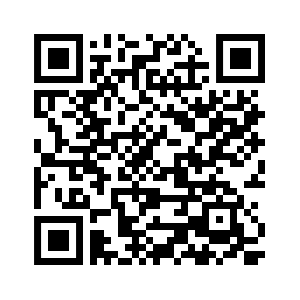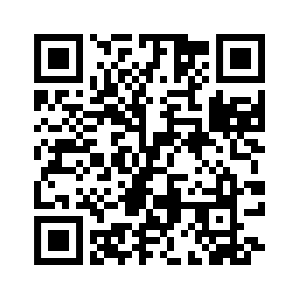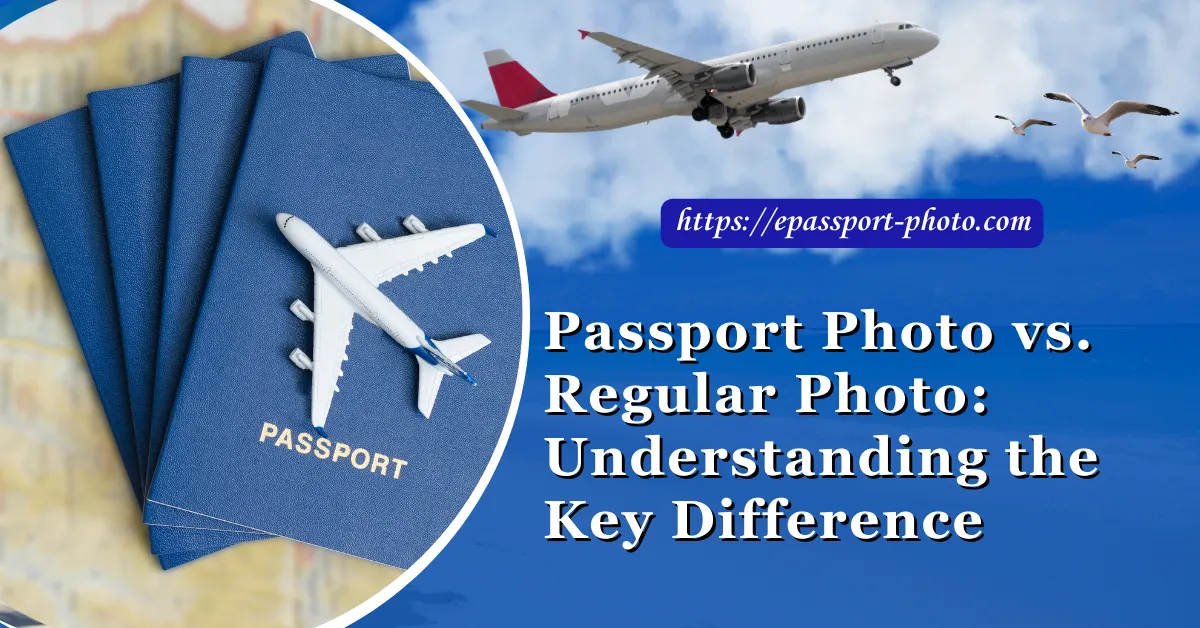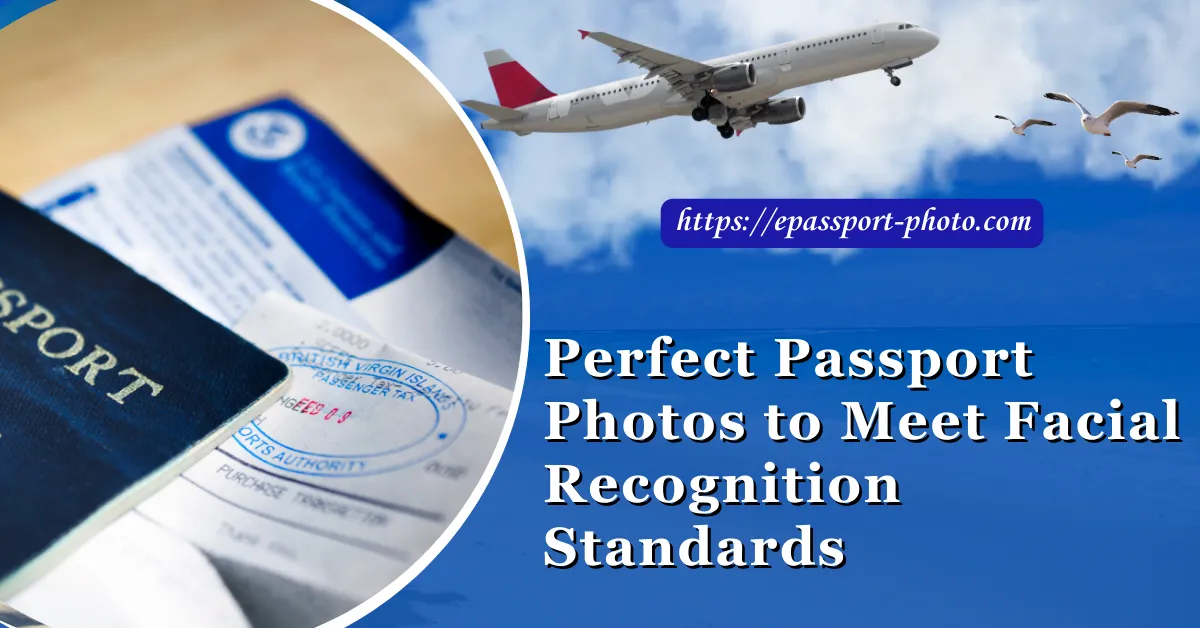The impact of a passport photo cannot be understated in the society we live in today when identification is crucial. As a reflection of who we are and how we choose to portray ourselves to the world, photos serve as our visual identity.
Whether it's for official purposes or personal memories, these snapshots hold immense value. This brings us to the intriguing comparison between passport photos and regular photos â two seemingly simple types of photography that carry unique attributes and purposes.
As you have landed on this blog to learn about US Passport Photos, you might be interested to know about salary and job opportunities in the USA. You can explore H1B Salary and Green Card Jobs to get information at your fingertips.
Overview of Passport Photos vs. Regular Photos
Passport Photos
Those succinct snapshots that find their way onto official documents are more than just pictures; they're gateways to international exploration. When venturing into the realm of travel or official documentation, having the right passport photo becomes crucial.
But what sets them apart? These photos adhere to stringent guidelines, encompassing aspects like size, background, lighting, and even our facial expressions and attire.
They're not just images; they're pieces of identity woven into biometric technology, enhancing security and thwarting potential fraud. By using our Passport Photo Online tool you can generate a perfect passport photo at your home using your device.
Regular Photos
On the other hand, captures life's moments beyond official contexts. From the candid smiles of family gatherings to the picturesque landscapes we stumble upon, these photos encapsulate our everyday stories.
Unlike their passport counterparts, regular photos are all about creative freedom. You can choose the backdrop, apply filters, and edit to your heart's content.
They're a canvas for personal expression, a way to preserve memories, and a means to convey emotions beyond the borders of official documentation.
Purpose and Use Cases of Passport Photos
In a world that's becoming increasingly interconnected, the significance of passport photos extends beyond personal experiences. They serve as a global language that nations understand, facilitating secure and orderly international movement.
Whether you're a frequent traveler or embarking on your first overseas adventure, the purpose of passport photos remains a cornerstone in your journey. So, when you search for "passport photo near me," you're not just looking for a picture; you're seeking a key to unlocking boundless possibilities.
Passport Application and Renewal
One of the primary purposes of passport photos is for the application and renewal of passports. Whether you're getting your very first passport or renewing an old one, these photos are the face of your identity.
The meticulously detailed specifications â from dimensions to facial expressions â are not mere formalities; they ensure consistency across official records and minimize the chances of discrepancies.
International Travel Requirements
When embarking on international journeys, passport photos become essential companions. Airports, customs, and border control are the stages where these photos play a significant role.
They are scrutinized to verify your identity against the passport holder, ensuring security and preventing unauthorized entry. Without the right passport photo that aligns with international standards, your journey might hit unexpected roadblocks, delaying your plans and creating unwelcome stress.
Technical Specifications of Passport Photos
When it comes to passport photos, precision is paramount. These seemingly simple snapshots are governed by a set of technical specifications that ensure uniformity, accuracy, and reliability. From size and dimensions to the subtleties of facial expressions, each detail plays a role in creating a photo that stands as a credible representation of your identity.
Size and Dimensions
Passport photos adhere to specific size and dimension guidelines, ensuring consistency across different identification documents and systems. The standard dimensions for a passport photo in the United States are 2 inches by 2 inches. This might sound trivial, but these dimensions are carefully calibrated to allow for easy recognition and comparison.
Background and Lighting Requirements
The background of a passport photo isn't chosen randomly; it's designed to make you the focal point. Generally, a plain white or off-white background is required. This eliminates distractions and ensures your features are visible.
Lighting is equally crucial â it needs to be evenly distributed, avoiding harsh shadows. A well-lit photo prevents ambiguity and facilitates the accurate identification of your facial features.
Facial Expression and Clothing Guidelines
Ever noticed how passport photos often seem to feature a neutral expression? That's not by chance. Guidelines typically call for a neutral or natural expression â no smiling, raised eyebrows, or frowns.
Your face should be fully visible, and both eyes must be open. Even eyeglasses can come under scrutiny; if worn, they shouldn't create reflections or hide your eyes. Clothing matters too. It's recommended to wear everyday attire that doesn't obscure your face or create confusion about your identity.
Headwear is generally discouraged unless it's worn for religious or medical reasons, in which case it should not cast shadows on your face.
Capturing a Passport Photo
Taking a passport photo requires more than simply following the rules; it also requires accurately portraying who you are. Whether you choose a DIY strategy or work with a skilled photographer, the result is a photo that captures your uniqueness and gets you ready for your next trip.
So, when you're on the hunt for a "US Passport Photo near me," consider these tips as your allies in ensuring a seamless and stress-free capture process.
DIY vs. Professional Photography
When it comes to capturing your passport photo, you're faced with a choice: do it yourself or entrust the task to a professional photographer. DIY might seem convenient, but it comes with challenges.
It can be challenging to get the ideal lighting, background, and facial expression. Professional photographers, on the other hand, are knowledgeable about the intricacies and technical requirements.
Through their guidance, you can ensure that your photo satisfies all the criteria without having to worry about making mistakes. You can generate a perfect passport photo similar to the Costco Passport Photo using our online tool.
Tips for a Successful Passport Photo Capture
Whether you're going the DIY route or seeking professional help, a successful passport photo capture requires attention to detail and a few tricks up your sleeve.
Lighting is Key: Soft, even lighting prevents harsh shadows and ensures your features are clear. Avoid direct light on your face, which can lead to reflections and glares.
Neutral Expression: Remember the neutral expression guideline? Practice it. Relax your face, keep your mouth closed, and avoid any exaggerated expressions.
Clothing and Accessories: Stick to simple clothing that doesn't obstruct your face or the guidelines. Remove accessories like hats and glasses that could cast unwanted shadows.
Camera Angle: Keep the camera at eye level. This prevents distortion and ensures an accurate representation of your facial features.
Resolution and Quality: Whether you're using a smartphone or a high-end camera, make sure the resolution and image quality meet the requirements. A blurry photo can lead to delays and complications.
Background Matters: If you're taking the DIY route, choose a plain, light-colored background that contrasts with your face.
Review and Retake: Don't settle for the first shot. Review the photo, zoom in to check for clarity, and retake if needed.
Role of Passport Photos in Identity Verification
In an era where digital communication and travel have become commonplace, the role of passport photos has evolved beyond static images. They are now integral components of a complex system that employs technology to safeguard borders and maintain the integrity of identification processes.
Biometric Technology and Facial Recognition
The use of passport photos for identity verification has been completely transformed by developments in biometric technology. Biometrics is the measurement and study of distinctive physical and behavioral traits, like iris patterns, fingerprints, and facial features. Facial recognition technology has become more common in the context of passport photos.
Your passport photo acts as a reference point for facial recognition algorithms, ensuring that the person presenting the passport matches the image on the document. This technology has significantly improved accuracy and streamlined the identification process at border controls and security checkpoints.
Enhancing Security and Preventing Fraud
Passport photos act as a frontline defense against identity fraud. The stringent guidelines for capturing and submitting passport photos ensure consistency and authenticity.
The strict regulations around facial expression, size, background, and lighting make it challenging for individuals to manipulate their photos to resemble someone else. This deters imposters from attempting to use fake or stolen identities for unlawful purposes.
Additionally, an additional degree of protection has been provided by incorporating biometric data into passport chips (also known as e-passports). These chips securely record the biometric data from the passport bearer, including a picture of their face.
To lower the danger of forgeries, border control agents can utilize this data to instantly confirm the validity of the passport and the identity of the holder.
Evolution of Passport Photos over Time
The evolution of passport photos tells a tale of adaptation, reflecting the changing priorities and challenges of the times. From monochrome portraits to digital biometrics, these images have transitioned from being mere records to becoming integral components of an advanced identity verification system.
Historical Perspective on Passport Photos
In the early days of passport photography, black and white portraits were the norm. These portraits often featured stern expressions, reflecting the formalities of the time. As the world moved forward, so did passport photos.
The mid-20th century witnessed the transition to color photography, adding a new layer of realism to these identification images. However, even with the introduction of color, regulations remained stringent, ensuring that the focus remained on the individual's face for accurate identification.
Modern Advancements in Passport Photo Technology
Fast forward to the present, and passport photo technology has reached astonishing heights. Sharper and more detailed photographs are already common because of high-resolution cameras and digital photography.
Identity verification is now more precise and safe than ever due to the introduction of biometric technologies. It is tough for imposters to get around security measures since facial recognition algorithms can assess the distinct characteristics of a face.
Moreover, the emergence of digital passports (e-passports) has taken passport photos into the digital realm. These passports store biometric data and images electronically, making the process of verification quicker and more reliable. Travelers can now experience more seamless border crossings with reduced waiting times, thanks to the integration of digital passport technology.
Emotional and Psychological Impact of Passport Photos
Behind the technical requirements and formalities of passport photos lies a realm of emotions and psychological nuances. The seemingly simple task of capturing these images can evoke a range of feelings, from stress to self-consciousness.
The Stress of Passport Photo-Taking
Believe it or not, passport photo-taking can be a source of stress for many. The pressure to meet stringent guidelines while keeping a neutral expression can lead to anxiety. It's normal to feel self-conscious about how you look or fear that you won't do it well. After all, these pictures reflect your identity on official documents, which gives the procedure an additional level of significance.
Strategies to Feel More Comfortable During the Process
While the stress is real, there are several strategies you can employ to ease the emotional impact of passport photo-taking:
Preparation: Familiarize yourself with the guidelines before your appointment. Knowing what's expected can help you feel more in control.
Practice: Spend some time practicing your neutral expression in front of a mirror. This can help you feel more comfortable when the moment comes.
Choose the Right Location: Opt for a professional photography service that specializes in passport photos. Their experience can make the process smoother and more efficient.
Relaxation Techniques: Deep breathing or visualization exercises can help calm nerves before the photo is taken.
Dress Comfortably: Wear clothes that make you feel confident and at ease. This can positively impact your overall demeanor during the photo session.
Ask for Retakes: Don't be afraid to ask for retakes if you're not satisfied with the initial results. Professionals are usually happy to accommodate reasonable requests.
Bring a Friend: Having a friend or family member accompany you can provide emotional support and make the experience more relaxed.
Regular Photos: Definition and Diversity
While passport photos serve a functional purpose, the world of photography extends far beyond official documentation. Regular photos, often capturing the essence of everyday life, hold a diverse range of uses and meanings.
Everyday Use of Regular Photos
Regular photos, sometimes referred to as candid shots, candidly capture life's fleeting moments. These are the snapshots that freeze the joy of a family gathering, the beauty of a sunset, or the simplicity of a child's laughter. Unlike posed portraits, regular photos capture authenticity and raw emotions, offering glimpses into the genuine experiences that make up our lives.
Social Media, Personal Albums, and Artistic Expression
In today's digital age, regular photos have found a home on social media platforms. From Instagram to Facebook, these photos offer windows into our lives, shared with friends, family, and sometimes even strangers. Social media serves as a digital canvas where regular photos are used to create visual stories, share adventures, and connect with others on a personal level.
Personal photo albums, whether physical or digital, serve as time capsules that document our journeys. These albums are filled with regular photos that preserve our memories, reminding us of our growth, relationships, and the stories that shape us. Furthermore, regular photos have a place in the realm of artistic expression.
Photographers often use these snapshots as mediums to convey their unique perspectives, playing with composition, lighting, and subject matter to create compelling visuals. Artistic regular photos can evoke emotions, challenge perceptions, and tell stories in ways that extend beyond words.
Technical Aspects of Regular Photos
In the world of regular photos, the technical details offer a canvas of possibilities. From diverse sizes and formats to the creative freedom of editing, these aspects add layers of richness to the art of photography.
Diverse Sizes and Formats
Unlike the standardized dimensions of passport photos, regular photos come in a multitude of sizes and formats. From the classic 4x6 prints to square Instagram posts and widescreen panoramas, the options are virtually endless. This diversity in sizes and formats caters to different preferences and purposes. A small print can become a cherished keepsake, while a larger format might grace the walls of a gallery.
Creative Freedom: Backgrounds, Filters, and Editing
Regular photos invite creative exploration. The background you choose can dramatically alter the mood and context of an image. Whether it's the serenity of a natural landscape or the vibrancy of an urban scene, the backdrop becomes an essential part of the composition.
Filters and editing tools offer a realm of creative possibilities. A vintage filter can infuse nostalgia into a photo, while a black-and-white edit can emphasize contrast and emotion. Editing software empowers photographers to fine-tune details, adjust lighting, and bring their vision to life.
Moreover, creative freedom extends beyond the moment of capture. Regular photos can be cropped, rotated, or resized during the editing process, allowing photographers to refine their composition and emphasize focal points.
Capturing Regular Photos
Behind every captivating regular photo lies an artful blend of spontaneity and skill. Capturing these everyday moments isn't just about pointing and shooting; it's about recognizing the significance of candid shots and mastering techniques that breathe life into emotions and memories.
Importance of Candid Shots
Candid shots are the heartbeats of regular photos. Unlike posed portraits, candid shots capture genuine emotions, interactions, and unscripted moments. These photos transport us back to the laughter, the surprise, and the fleeting expressions that define our experiences. Candid shots reveal authenticity, telling stories that words alone cannot convey.
Techniques for Capturing Emotions and Moments
Mastering the art of capturing emotions and moments in regular photos requires a blend of intuition and technique:
Be Observant: Keep an eye out for candid moments unfolding around you. Anticipate interactions, reactions, and expressions that hold emotional depth.
Timing is Key: The perfect moment is often fleeting. Be patient and ready to capture that split-second when genuine emotions surface.
Natural Lighting: Utilize natural lighting whenever possible. Soft, diffused light enhances the atmosphere and adds a touch of authenticity.
Minimal Interruption: When capturing candid shots, aim to be unobtrusive. Minimize your presence and use a telephoto lens if needed.
Framing and Composition: Consider the composition of the photo. Use framing techniques to draw attention to the subject while providing context.
Engage with Your Subjects: Engaging in conversation or establishing rapport can help people feel more at ease, resulting in natural expressions.
Storytelling Elements: Look for details that enhance the storytelling aspect of the photo. These could be props, gestures, or background elements.
Experiment with Angles: Play with different angles to add visual interest. A unique perspective can transform a mundane scene into something remarkable.
Post-Processing Thoughtfully: Light editing can enhance the mood and emotions of candid shots. Adjustments in contrast, exposure, and color can amplify the impact of the photo.
Comparing Composition: Passport vs. Regular Photos
The composition of a photo acts as a visual storyteller, guiding the viewer's gaze and invoking emotions. Passport photos and regular photos approach composition from distinct angles â one for identification, the other for narrative.
Formal vs. Casual Composition Styles
Passport photos adhere to a formal composition style dictated by guidelines. The subject is centered, head-on, with a neutral expression against a plain background. This formal arrangement focuses solely on the face, ensuring accurate identification.
Regular photos, on the other hand, embrace casual composition styles. They invite creativity by allowing the subject to be off-center, surrounded by context, and captured from various angles.
The setting, the expressions, and the interactions all contribute to the story these photos tell. Candid shots capture unscripted moments, revealing emotions and interactions that can't be replicated in a formal portrait.
How Composition Impact the Story of the Photo?
Composition is the language of photography. It's how photographers communicate emotions, narratives, and perspectives to their viewers. In passport photos, the strict composition rules ensure consistency and accuracy for identification purposes. The focus on the face creates an immediate connection to the person's identity, leaving little room for distraction.
Regular photos, however, leverage composition to evoke emotions and convey stories. The positioning of subjects, the choice of background, and the interplay of light and shadow all contribute to the mood of the photo. A subject placed off-center can create a sense of movement or contemplation, while the use of negative space can evoke a feeling of isolation or serenity.
Personalization and Creativity: Regular Photos
In an era where images are abundant, the personalization and creativity you infuse into your regular photos set them apart. They are a testament to your unique perspective, a reflection of your emotions, and a way to freeze fleeting moments in time.
Adding Personal Touches to Regular Photos
Regular photos provide a blank canvas that you can personalize in countless ways. From the choice of subject and setting to the creative use of colors and textures, you have the power to make each photo uniquely yours. Whether it's a cherished memento from a vacation or a candid shot from a family gathering, your personal touches can turn ordinary moments into extraordinary memories.
Using Regular Photos to Convey Emotions and Memories
Regular photos have an innate ability to evoke emotions and bring memories rushing back. You can travel to a different time and location with just one look at a well-taken picture, reviving the emotions and experiences connected to that particular instant. A smile's tilt, an eye's glint, or the coziness of an embrace might act as emotional triggers to connect the past and the present.
Moreover, the act of curating regular photos can be a form of self-expression. You're not just capturing scenes; you're crafting a visual story that reflects your life's journey, your interests, and your relationships. Each photo becomes a chapter in the narrative of your existence, a piece of the puzzle that shapes your identity.
Legal and Ethical Considerations with Regular Photos
As you journey through the world of photography, remember that each regular photo you capture involves not just a moment frozen in time, but the ethical responsibility to treat the subjects with respect and consideration.
By prioritizing privacy and seeking consent, you're not just preserving memories; you're building a foundation of trust and responsibility that enhances the authenticity and integrity of your photography.
Privacy Concerns in the Digital Age
The way we create, distribute, and experience photographs has changed in the digital age. A common photo can be shared with the world with just one button click. However, privacy issues are brought up by this accessibility to sharing.
Photographs freeze moments in time and frequently show people in natural settings. The privacy of the people in your images must be protected at all costs in the era of data leaks and online tracking.
Think about the setting where the shot was taken. Is it a private moment? Does it involve sensitive information or a location that should remain undisclosed? Always be aware of the potential implications of sharing certain photos, especially when they involve others.
Seeking Consent for Sharing and Publishing Photos
Obtaining consent before sharing or publishing photos is both an ethical responsibility and, in some cases, a legal requirement. If you're capturing photos of individuals other than yourself â whether they're friends, family, or strangers â it's important to seek their permission before sharing these images publicly.
This is particularly crucial when the photo involves sensitive situations, personal spaces, or potentially compromising contexts. Depending on the situation, consent may be requested orally or in writing. The subjects can make a more educated choice if you explain how the shot will be used and where it might be shared.
Moreover, when sharing regular photos on social media platforms, review the privacy settings. Ensure that you're only sharing with the intended audience and that the content isn't visible to a wider audience than you intended.
Passport Photos in a Digital World
The evolution of passport photos has been profoundly influenced by the digital age, transforming the way we capture, store, and utilize these essential images. From the shift to digital passport photos to their integration into advanced identification systems, the intersection of photography and technology has redefined the role of these images in the modern world.
Digital Passport Photos vs. Printed Ones
The transition from printed to digital passport photos has marked a significant milestone. Digital passport photos offer convenience, flexibility, and the ability to quickly reproduce images when needed. The ability to take digital passport photos has expanded with the popularity of high-quality cameras and photo editing software.
Digital images also save time and resources compared to conventional printed photos because they are simple to save, share, and utilize in a variety of applications. However, the shift to digital passport photos also raises considerations related to security and authenticity. Ensuring the integrity of digital photos and preventing tampering are ongoing challenges that must be addressed.
Integration of Passport Photos into Digital Identification Systems
The digital transformation extends beyond individual photos to the integration of passport photos into advanced identification systems. Biometric technology, such as facial recognition, has revolutionized identity verification. Passport photos are now integral to e-passports, which store biometric data electronically to enhance security and streamline border control processes.
Furthermore, the integration of passport photos into digital identification systems allows for seamless verification across various platforms and applications. Whether it's airport security, online banking, or government services, these systems leverage passport photos to ensure that the person presenting the identification matches the stored image.
Social and Cultural Influences on Passport Photos
Passport photos, seemingly standardized, are influenced by a myriad of social and cultural factors that vary from country to country. These factors shape the diversity in passport photo regulations worldwide and play a crucial role in accommodating cultural sensitivities within these images.
Diversity in Passport Photo Regulations Worldwide
Passport photo regulations aren't a one-size-fits-all concept. They vary significantly from one nation to another, reflecting the unique norms and priorities of each culture. While some countries adhere to strict guidelines that focus solely on identification purposes, others embrace a more lenient approach that allows for personal expression.
The dimensions, background colors, clothing guidelines, and even the permitted facial expressions can differ dramatically. These variations highlight how passport photos are not just technical requirements; they mirror the cultural values and expectations of each society.
Cultural Sensitivities and Their Portrayal in Passport Photos
Cultural sensitivities are embedded in passport photo regulations. Different cultures have distinct norms regarding modesty, head coverings, and facial expressions. These nuances are reflected in the allowances and accommodations made for religious and cultural practices.
For instance, some nations let people cover their heads for religious reasons as long as their entire face can be seen, including the top of their forehead and the bottom of their chin. This acknowledges the importance of religious practices while still adhering to identification standards.
Moreover, cultural attitudes toward eye contact, smiling, and even personal grooming impact how individuals present themselves in passport photos. In some cultures, direct eye contact is a sign of confidence, while in others, it may be seen as disrespectful. Smiling, which is typically discouraged in passport photos, might be acceptable in cultures where it's a natural expression.
Regular Photos as a Reflection of Culture
Regular photos transcend their status as mere images; they become vessels of culture, identity, and human connection.
As you snap photos of everyday moments and extraordinary experiences, remember that you're not just preserving memories; you're contributing to a global narrative that celebrates the rich mosaic of cultures that make up our world.
How Regular Photos Capture Cultural Norms?
Regular photos serve as silent storytellers, capturing cultural norms and practices that might not be immediately apparent to an outsider. The way people dress, the way they interact, and the settings they choose â all of these elements are infused with cultural nuances.
A photo taken during a festive celebration, for instance, can showcase traditional clothing, rituals, and decorations that are symbolic of a particular culture.
Cultural norms are often deeply embedded in body language, facial expressions, and social interactions. Regular photos freeze these moments, revealing the unspoken codes that govern human behavior within a specific cultural context. A simple gesture, a shared laugh, or a scene of daily life can speak volumes about the values that drive culture forward.
Sharing Cultural Experiences through Everyday Photography
Everyday photography acts as a bridge that connects cultures and allows for the sharing of cultural experiences. In an interconnected world, regular photos posted on social media platforms or shared in personal albums offer a glimpse into the lives of individuals from different corners of the globe.
Through regular photos, people can share their culinary traditions, celebrations, festivals, and daily routines, giving others a chance to explore and appreciate the rich diversity of human cultures. These images foster understanding and empathy, breaking down barriers and highlighting our shared humanity.
Moreover, regular photos captured during travels provide a unique opportunity to experience new cultures firsthand. These photos serve as visual diaries, capturing the textures, colors, and emotions of a different environment. They become a way to relive and share the cultural experiences that have left a lasting impact.
Passport Photos: Striking a Balance between Formality and Authenticity
Passport photos exist at the intersection of formality and authenticity, where the need for accurate identification meets the desire to convey a true representation of oneself. Navigating this delicate balance between official requirements and personal identity is an art that requires thoughtful consideration and a touch of creativity.
Navigating Between Official Requirements and Personal Identity
Passport photos serve a critical purpose in identification, and as such, they adhere to specific guidelines. These guidelines ensure uniformity and accuracy, making it easier for authorities to verify your identity. However, this formal approach can sometimes clash with the desire to present yourself authentically. Your passport photo is more than just an image; it's a representation of who you are.
Balancing official requirements and personal identity involves finding ways to remain true to yourself within the confines of the guidelines. It's about expressing your individuality while meeting the criteria that facilitate seamless identification.
Tips for Maintaining Authenticity in Passport Photos
Maintaining authenticity in your passport photos is not only possible but also important for conveying your true self.
Facial Expression: While the guidelines often call for a neutral expression, that doesn't mean you can't convey a genuine smile through your eyes. Keep your facial muscles relaxed while letting your eyes reflect a natural, warm expression.
Clothing Choice: While adhering to clothing guidelines, choose an outfit that makes you feel comfortable and confident. Avoid clothing that obstructs your face or distracts from your identity.
Grooming: Present yourself as you would on any other day. A neat appearance that reflects your personal grooming choices helps maintain authenticity.
Background: If allowed, choose a background that resonates with you. It could be a light color that complements your skin tone or a backdrop that holds personal significance.
Posing: While centered poses are often required, experiment with subtle variations to find a pose that captures your essence. Tilt your head slightly or adjust your posture within the guidelines.
Capture the Eyes: Your eyes are the windows to your soul. Ensure they are well-lit and clear, and convey the sincerity that is true to you.
Regular Photos: Balancing Realism and Idealism
In the world of regular photos, a delicate dance occurs between capturing genuine, unscripted moments and the allure of presenting an idealized version of reality. This interplay between realism and idealism is what gives regular photos their unique charm and complexity.
Art of Capturing Genuine Moments
At the heart of regular photos lies the art of capturing genuine moments as they unfold. Candid shots freeze the raw emotions, interactions, and nuances that define our lives. Whether it's a spontaneous burst of laughter, a contemplative gaze, or a shared glance between loved ones, these moments are authentic and unfiltered.
The skill in capturing genuine moments lies in being a keen observer and seizing the fleeting instances that hold significance. Candid shots are a testament to the beauty of the unposed, the unguarded, and the natural. They offer a window into the true essence of a person or a scene.
How Regular Photos May Portray an Idealized Version of Reality?
While candid shots excel at capturing authenticity, regular photos also have the power to present an idealized version of reality. This can be achieved through composition, lighting, and editing. The deliberate arrangement of elements and the play of light and shadow can create a sense of drama and beauty that might not be present in the unfiltered moment.
Moreover, post-processing techniques can enhance colors, remove distractions, and refine details, allowing regular photos to align more closely with our perception of an ideal scene.
This idealization has the power to stir feelings, inspire creativity, and inspire awe. However, it's critical to recognize that idealization occasionally makes the distinction between reality and ambition difficult to discern. While boosting a scene's beauty is a legitimate aesthetic option, it's crucial to preserve honesty and clarity regarding the changes that were made.
Conclusion
Passport photos and regular photos stand as distinct yet interconnected entities, each weaving a unique narrative of identity, authenticity, and creativity. Passport photos, with their formal guidelines and focus on identification, remind us of the practical and legal dimensions of our lives.
They encapsulate the balance between adhering to standards while expressing our individuality, showcasing the intricacies of navigating official requirements and personal authenticity. On the other hand, regular photos capture the essence of everyday life, celebrating the mundane moments and extraordinary experiences that form the tapestry of our existence.
These images are both windows into our individual stories and bridges that connect us to the rich diversity of cultures and perspectives that color our global society. Photography, in all its forms, has the power to freeze time, preserve memories, and communicate emotions that transcend words.
It encapsulates the dichotomy of realism and idealism, offering glimpses of genuine moments while allowing for creative interpretation. Whether you're adhering to guidelines or exploring artistic expressions, photography invites you to embrace the dualities, celebrate the nuances, and find beauty in both the formal and the candid.
FAQs
Can I smile in my passport photo?
While some countries allow a slight, natural expression, most passport photo guidelines recommend a neutral expression to ensure accurate identification. Exaggerated smiles or frowns might interfere with facial recognition technology or make it harder to match your photo with your appearance.
Is it okay to edit my passport photo?
Minor edits like adjusting color balance and cropping are usually allowed, but extensive alterations that change your appearance are discouraged. The goal is to represent your current look accurately for identification purposes.
Can I use a regular photo as a passport photo?
Using a regular photo might not meet the specific requirements for a passport photo, which include size, composition, and quality standards. Professional passport photos are recommended to ensure compliance.
What is the difference between a passport photo and a regular photo?
A passport photo adheres to specific guidelines for identification purposes, while a regular photo has more creative freedom. Passport photos follow standards like size, expression, and background, whereas regular photos capture everyday moments.
What makes a photo a passport photo?
A passport photo meets the official requirements for identification. This includes specific size, composition, background, and expression guidelines set by passport issuing authorities. Take the help of CVSÂ Pharmacy Passport Online to generate passport photos just like CVS Pharmacy.
What is the exact size of the US passport photo?
The standard US passport photo size is 2 inches by 2 inches (51mm x 51mm). Walmart Passport Photo is a renowned store approved by the US Government of state for the service of US passport photos.
What is the best photo for a passport?
A clear, well-lit photo with a neutral expression and plain background is ideal. Follow the guidelines provided by your passport issuing authority.
Can passport photos be on normal paper?
Passport photos are usually printed on photo-quality paper to ensure durability and accurate representation of details.
What Color is best for a passport photo?
Neutral colors like white, off-white, or light gray are generally recommended for the background of passport photos.
What are the reasons behind the rejection of my passport photo?
Passport photos can be rejected due to issues like incorrect size, improper background, unsuitable expression, and excessive retouching. Adhering to official guidelines helps prevent rejection.







![Passport Style Photo vs. Professional Headshot [Key Differences]](https://epassport-photo.com/storage/blog-feature-images/passport-style-photo-vs-professional-headshot.webp)